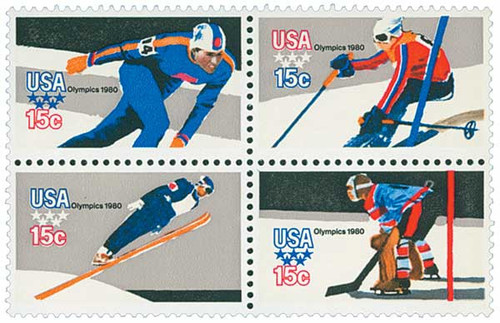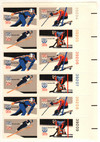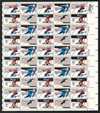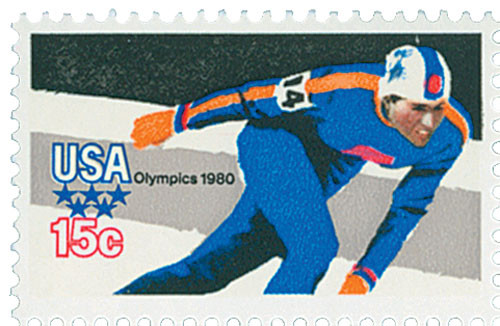
# 1795-98 - 1980 15c 13th Winter Olympic Games
1980 15¢ Winter Olympic Games
City: Lake Placid, New York
Quantity: 208,295,000
First U.S. Winter Olympics

On February 4, 1932, the first Winter Olympics held in the United States opened in Lake Placid, New York.
Bringing the Winter Olympics to the US in 1932 was a major goal of Godfrey and Melvil Dewey. Melvil was the inventor of the Dewey Decimal System and had established the Lake Placid Club in New York in 1895. The club became the first continuously operating winter resort in the US and would host the 1932 Winter Olympics.

Melvil’s son Godfrey attended the 1928 Olympics in St. Moritz to gain support for holding the 1932 games at his family’s resort. While some members of the International Olympic Committee (IOC) didn’t think that anyone in the US or Canada “had the necessary competence to organize ski events,” others were very welcoming of the idea of holding the next games in the US.
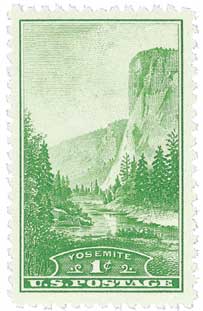
The decision would be made in 1929, and Godfrey had a lot to overcome in that time. He had to convince New York Governor Franklin Roosevelt to fund the $250 million construction of the bobsled run. He also needed to convince the IOC and the International Ski Federation (FIS) that the US could do it at a time when most other countries saw American skiing as more backwoods. Additionally, he had to face off against another location vying to host the Olympics – Yosemite, California. In 1929, he succeeded in convincing the IOC that Lake Placid would be more suited for the games and Lake Placid was officially selected.
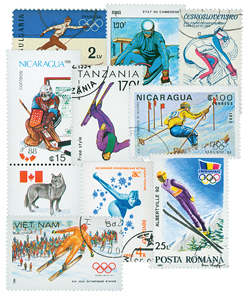
The Lake Placid games would differ from the first two Winter Olympics in that there weren’t that many facilities already built, so it would cost $1 million (about $9 million today) to prepare Lake Placid for the Olympics. This was especially challenging in the wake of the 1929 Wall Street Crash and Great Depression. The surrounding towns helped raise $350,000 through bonds. Roosevelt would also grant additional funds for the bobsled run and skating rink.
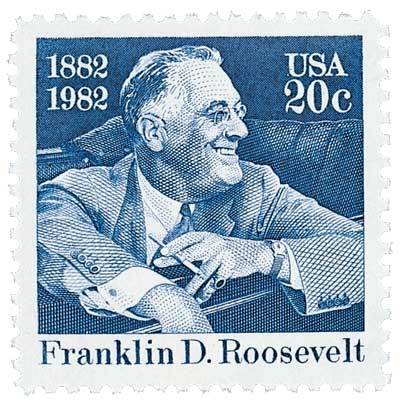
As the games drew another issue arose. It was the warmest winter on record at that time and much of the snow on the courses melted. So Godfrey directed that tons of snow be removed from the woods to fill in the courses. The games officially opened on February 4, 1932. Governor Roosevelt declared the games open and called for world peace (Japan had invaded Chinese Manchuria).
Because of the Depression, there was a relatively small turnout. Just 17 nations participated in the games, with a total of 252 athletes (231 men and 21 women). They competed in 14 events in four sports. One of the highlights of the games was Eddie Eagan winning a gold medal as a member of the four-man bobsled team. Eagan had previously won a medal in the 1920 Antwerp Olympics as a light-heavyweight boxer. Eagan remains the only person in Olympic history to win gold medals in both Summer and Winter sports.
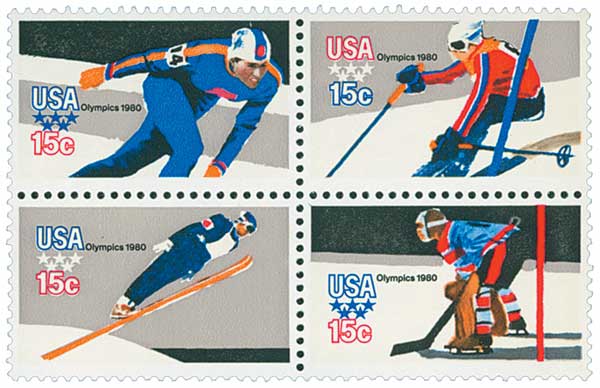
The US had the most total medals (12) and the most gold (6). The games closed on February 15, with New York City Mayor Jimmy Walker presiding. While the games weren’t financially successful, they did show the world that the US could put on the Winter Olympics just as well as European nations. The US would hold the Winter Olympics three more times. And in 1980, the Winter Olympics returned to Lake Placid.
Click here to view footage from the 1932 Olympics.
Click here for more Olympics stamps.
1980 15¢ Winter Olympic Games
City: Lake Placid, New York
Quantity: 208,295,000
First U.S. Winter Olympics

On February 4, 1932, the first Winter Olympics held in the United States opened in Lake Placid, New York.
Bringing the Winter Olympics to the US in 1932 was a major goal of Godfrey and Melvil Dewey. Melvil was the inventor of the Dewey Decimal System and had established the Lake Placid Club in New York in 1895. The club became the first continuously operating winter resort in the US and would host the 1932 Winter Olympics.

Melvil’s son Godfrey attended the 1928 Olympics in St. Moritz to gain support for holding the 1932 games at his family’s resort. While some members of the International Olympic Committee (IOC) didn’t think that anyone in the US or Canada “had the necessary competence to organize ski events,” others were very welcoming of the idea of holding the next games in the US.

The decision would be made in 1929, and Godfrey had a lot to overcome in that time. He had to convince New York Governor Franklin Roosevelt to fund the $250 million construction of the bobsled run. He also needed to convince the IOC and the International Ski Federation (FIS) that the US could do it at a time when most other countries saw American skiing as more backwoods. Additionally, he had to face off against another location vying to host the Olympics – Yosemite, California. In 1929, he succeeded in convincing the IOC that Lake Placid would be more suited for the games and Lake Placid was officially selected.

The Lake Placid games would differ from the first two Winter Olympics in that there weren’t that many facilities already built, so it would cost $1 million (about $9 million today) to prepare Lake Placid for the Olympics. This was especially challenging in the wake of the 1929 Wall Street Crash and Great Depression. The surrounding towns helped raise $350,000 through bonds. Roosevelt would also grant additional funds for the bobsled run and skating rink.

As the games drew another issue arose. It was the warmest winter on record at that time and much of the snow on the courses melted. So Godfrey directed that tons of snow be removed from the woods to fill in the courses. The games officially opened on February 4, 1932. Governor Roosevelt declared the games open and called for world peace (Japan had invaded Chinese Manchuria).
Because of the Depression, there was a relatively small turnout. Just 17 nations participated in the games, with a total of 252 athletes (231 men and 21 women). They competed in 14 events in four sports. One of the highlights of the games was Eddie Eagan winning a gold medal as a member of the four-man bobsled team. Eagan had previously won a medal in the 1920 Antwerp Olympics as a light-heavyweight boxer. Eagan remains the only person in Olympic history to win gold medals in both Summer and Winter sports.

The US had the most total medals (12) and the most gold (6). The games closed on February 15, with New York City Mayor Jimmy Walker presiding. While the games weren’t financially successful, they did show the world that the US could put on the Winter Olympics just as well as European nations. The US would hold the Winter Olympics three more times. And in 1980, the Winter Olympics returned to Lake Placid.
Click here to view footage from the 1932 Olympics.
Click here for more Olympics stamps.

